Disappearing Packaging Market Size and Trends
The Disappearing Packaging Market is estimated to be valued at USD 4.75 Bn in 2025 and is expected to reach USD 10.11 Bn by 2032, exhibiting a compound annual growth rate (CAGR) of 11.4% from 2025 to 2032.
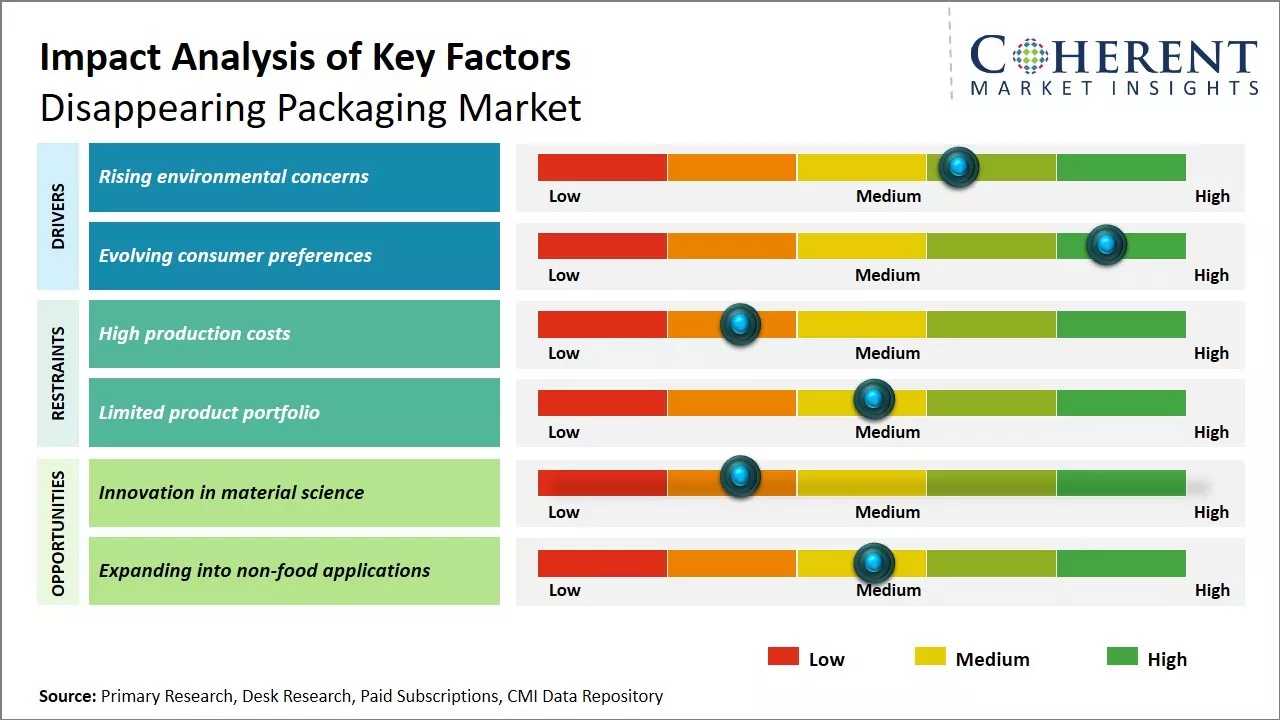
Discover market dynamics shaping the industry: Download Free Sample
The Disappearing Packaging Market has been witnessing significant growth over the past few years. The demand for biodegradable and eco-friendly packaging options is increasing globally due to the rising awareness about sustainable living and reducing plastic waste. Many companies are investing in R&D to develop innovative disappearing packaging solutions made from non-plastic, plant-based materials which can degrade completely on their own without need of any industrial composting. Governments across nations have also introduced several regulations mandating use of commercially compostable packaging products. If this rising demand continues and more regulations are imposed, the disappearing packaging market is expected to grow rapidly during the forecast period.
Rising environmental concerns
With the growing environmental awareness among consumers and governments across the globe, the demand for sustainable packaging is on the rise. People are increasingly concerned about the overuse of plastics and its adverse effects on the planet. Various studies have highlighted how billions of tones of plastic end up in oceans and landfills every year causing immense harm to ecosystems. This has brought packaging waste into the spotlight like never before. More and more companies are facing pressure from their customers as well as regulators to switch to eco-friendly packaging materials and solutions. Disappearing or dissolvable packaging offers a viable alternative to reduce the usage of plastics in packaging. Products embedded in materials that can safely dissolve or disintegrate in marine or soil environments prevent the formation of micro plastics. They help address the global plastic pollution crisis in a meaningful way. Manufacturers of food and beverages, pharmaceuticals, home and personal care have started exploring options to replace or complement conventional plastic and paper packaging with solutions that can disappear over time. Regulatory pushes to ban specific single-use plastic items and impose stricter rules around packaging waste disposal in different parts of the world are also driving the need for innovative disappearing packaging formats. The growing clamor around sustainability, circular economy and carbon footprint reduction is compelling companies across industries to prioritize development of transparent, effective and planet-friendly packaging technologies.
Market Concentration and Competitive Landscape
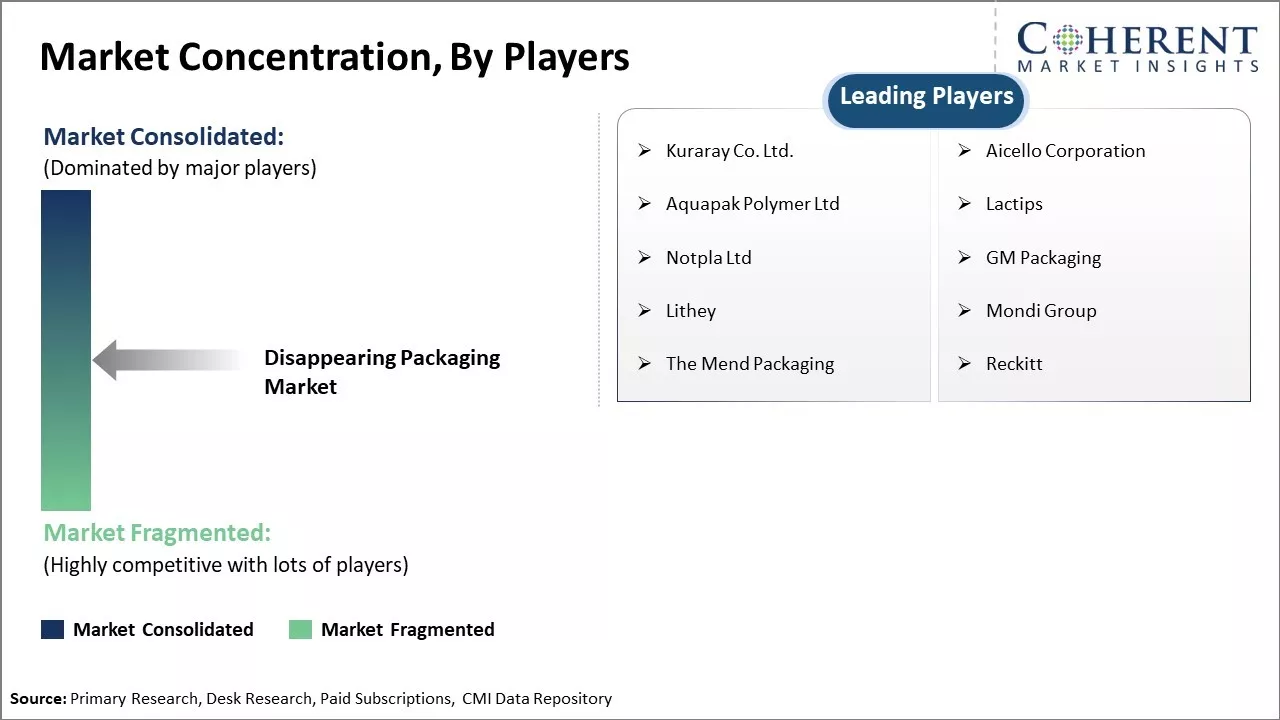
Get actionable strategies to beat competition: Download Free Sample
Evolving consumer preferencesIn addition to being environmentally conscious, today's consumers are health-cautious and seek convenient packaging interfaces. They want to understand what goes into the products they use and how packaging ingredients or residues could potentially impact their well-being. Transparent labeling of materials and ingredients has become important for building trust with conscious buyers. Meanwhile, aspects like resealability, easy opening, on-the-go consumption and so on are also influencing packaging decisions. Products packed in materials that can disappear without a trace fulfill many of these evolving consumer needs. They provide reassurance that residues from packaging won't remain in the environment or contaminate items indefinitely. The self-destructing nature eliminates the need for disposal, reducing mess and creating a more streamlined user experience. Disappearing pouches and packets for food items like condiments, nuts or snacks offer an effortless portable solution. Similarly, for pharmaceuticals, dissolvable blisters or sachets ensure all content is utilized, preventing wastage while removing concerns over unintended ingest.
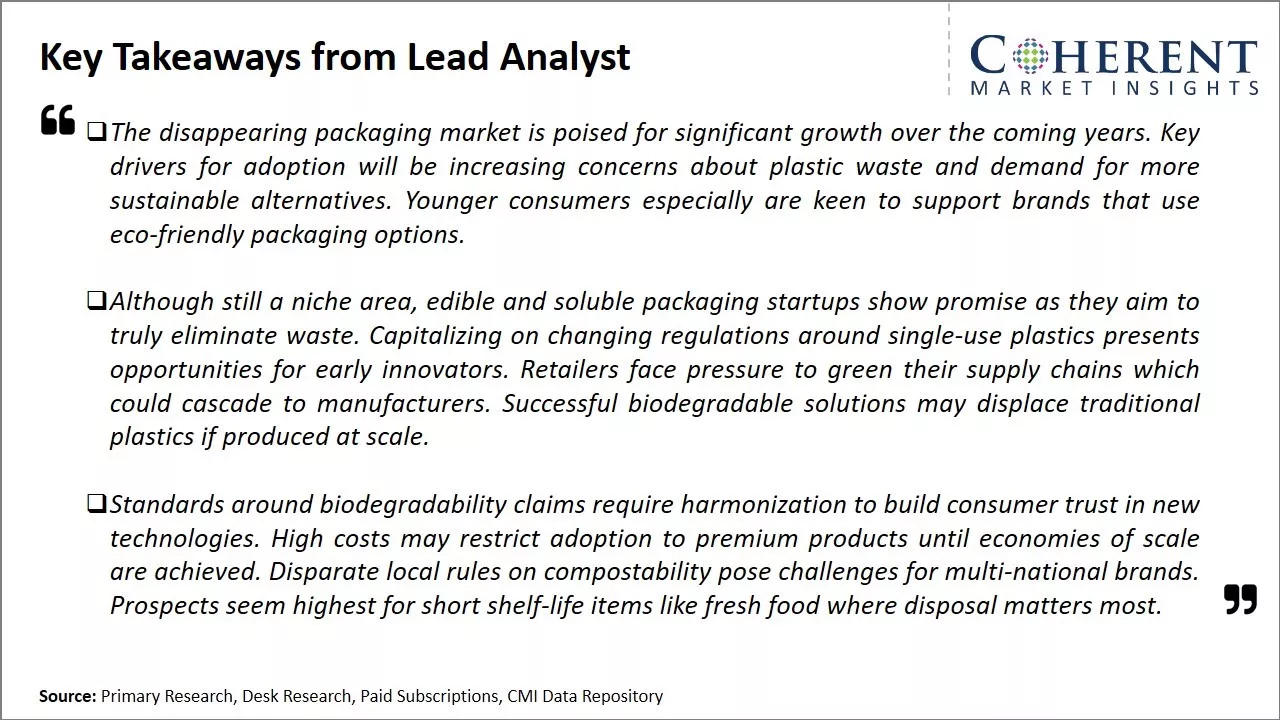
To learn more about this report, Download Free Sample
Market Challenges: High production costsHigh production costs have been a major restraint for the growth of the disappearing packaging market. Disappearing packaging refers to products that dissolve or disintegrate after use, thus eliminating waste. While this offers clear sustainability benefits by reducing plastic pollution, the technology and processes required to manufacture such packages come at a significant cost. Developing packages that can safely hold products, withstand transportation and storage, yet disappear without a trace after use requires extensive research and development. New materials have to be carefully formulated and tested to ensure they dissolve efficiently within the desired timeframe without leaving any harmful residues. The production lines and machinery needed to mass produce these innovative packaging solutions also represent a major capital investment. Additionally, issues regarding quality control and consistency in manufacturing processes continue to pose challenges.
Market Opportunities: Innovation in material science
Innovation in material science will be a driver of growth in the disappearing packaging market. Currently, most single-use packaging relies on plastics that take hundreds of years to degrade. This poses sustainability challenges as plastics pollute our waterways and landscape. However, advances in material science are enabling the development of new packaging materials that can fully degrade within just a few weeks or months after disposal. For example, researchers are exploring the use of seaweed-based bioplastics or edible films made from agricultural byproducts that break down harmlessly in the natural environment. As these new sustainable materials gain traction, it will open up entire new categories for disappearing packaging across various industries like food, consumer goods, pharmaceuticals and more.
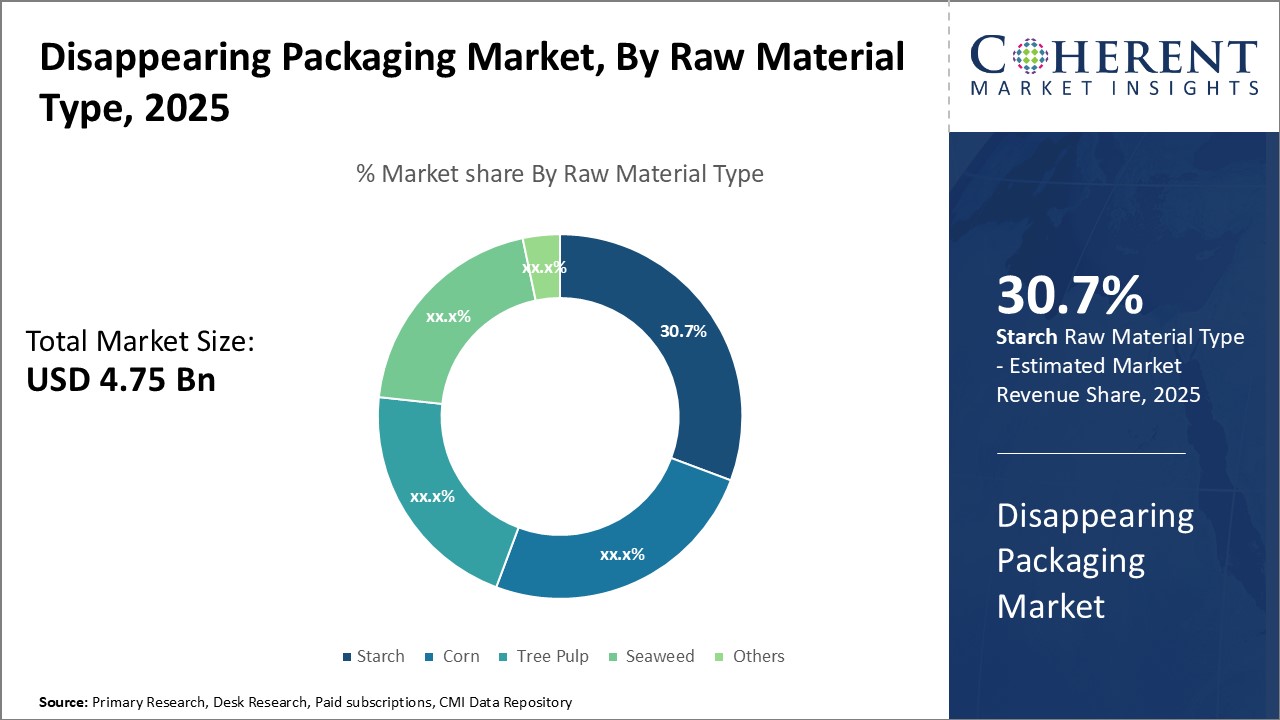
Discover high revenue pocket segments and roadmap to it: Download Free Sample
Insights, by raw material type: Starch Dominates the Disappearing Packaging Market Raw Materials LandscapeIn terms of raw material type, starch is estimated to hold 30.7% share of the disappearing packaging market in 2025, owing to its sustainability credentials and natural degradability. Starch is a popular biopolymer extracted from corn, wheat and potato crops. Being one of the most abundant and renewable resources on earth, starch fulfills the industry's demand for eco-friendly packaging materials. Starch break down easily into glucose units via hydrolysis when exposed to water and microbes in the soil or marine environment. This feature makes starch-based packaging readily disintegrating without toxic residue. Additionally, starch has excellent printability and flexibility attributes to take on versatile packaging forms such as cartons, bags, clamshells and wraps. Above all, it offers a cost-effective alternative to artificial polymers and meets regulatory pushes for sustainable alternatives. Leading manufacturers are constantly innovating new starch formulations with enhanced barrier and mechanical properties. Native and modified starches significantly lower the carbon footprint of products. Overall, the biodegradable and natural properties of starch give it an edge over other raw materials in the disappearing packaging domain.
Insights, by application: Food Packaging Leads Application Demand in Disappearing Packaging Market
Food packaging is estimated to hold 39.2% share of the disappearing packaging market in 2025, owing to stringent regulations and consumer focus on sustainability in the industry. Being a highly visible mass market, the food sector drives innovation and adoption of eco-friendly packaging solutions. Disappearing food packaging prevents litter on land and in oceans by fully breaking down after intended use. It alleviates concerns around plastic pollution from multilayer packaging waste. Regulators incentivize use of compostable formats with more favorable policies. Additionally, conscious customers are willing to pay premium for sustainable packaged food and beverages. Leading food brands prioritize disappearing foodservice items like plates, cups and cutlery to meet sustainability goals. Quick service restaurants heavily rely on naturally degradable packaging to demonstrate responsible credentials. Manufacturers also offer disappearing pouches, wraps and bags for perishables, groceries and snacks. Overall, tightening environmental requirements as well as demand for eco-packaging fuel growth of this application segment.
Regional Insights
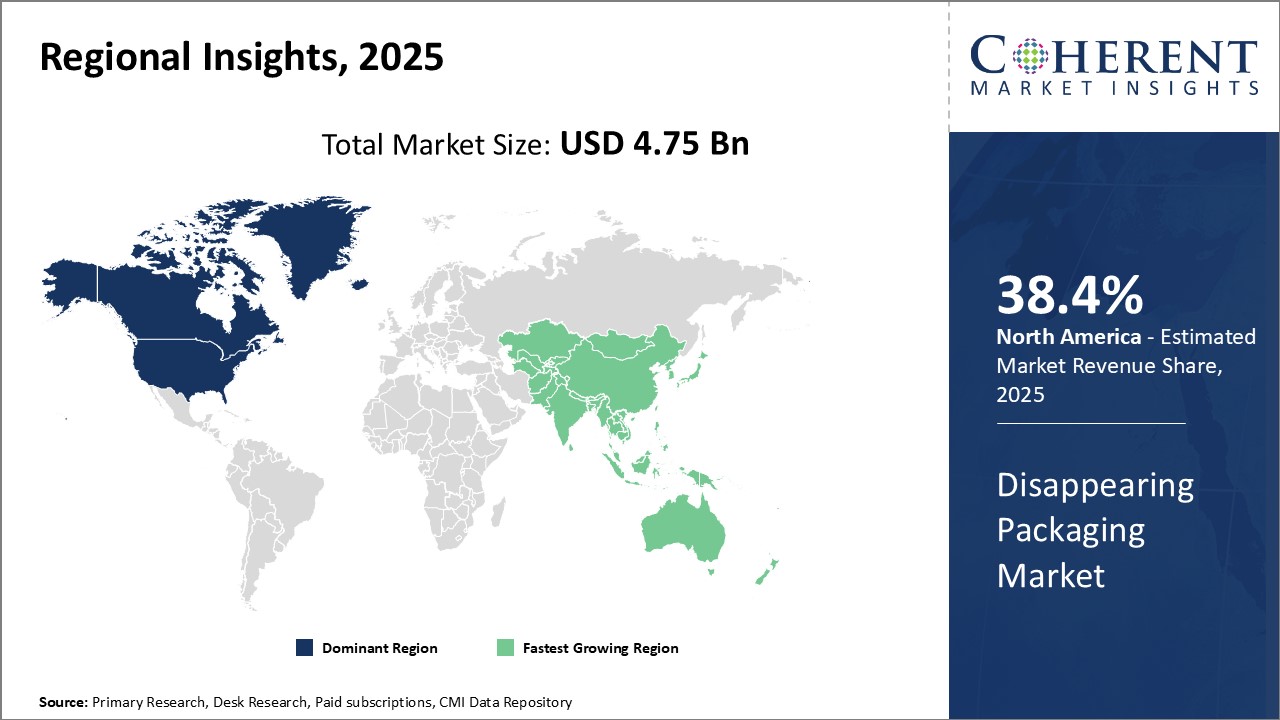
Need a Different Region or Segment? Download Free Sample
North America has emerged as the dominant region in the disappearing packaging market and is estimated to hold 38.4% share in 2025. This can be primarily attributed to the large footprint of well-established packaging and FMCG companies in the region. Major brands have shown high inclination towards adopting sustainable packaging solutions to meet the evolving consumer demands and regulations. The shelf life of packaged perishable food items is a critical factor for grocery retailers and food service providers in the region. Disappearing packaging addresses this concern effectively by dissolving or disintegrating the package once its contents have been fully utilized. Another major factor contributing to North America's leadership is the stringent regulations around single-use plastics and packaging waste management. Both U.S. and Canada have implemented policies to ban certain non-biodegradable products and promote bio-based alternatives. This creates a conducive environment for the adoption of disappearing packaging formats. The region is also a pioneer in research and development activities related to bioplastics and edible films. This enables packaging converters and brand owners to access innovative disappearing packaging technologies at a rapid pace.
Among the growing markets, Asia Pacific displays high market promise for disappearing packaging. China represents a significant portion of the regional market currently. The country hosts a massive FMCG industry that is continuously innovating its product offerings and packaging formats. Reducing plastic waste has also emerged as a priority for both the government and consumers in China. This makes disappearing packaging an attractive proposition. Other Southeast Asian countries like India and Indonesia are anticipated to be high growth territories. Their developing consumer markets and focus on sustainability create ample opportunities. Additionally, the bulk of global bioplastics production is concentrated in Asia, which puts the region in an advantageous position. With continued economic expansion and changing social attitudes, Asia Pacific is expected to become the fastest growing disappearing packaging market globally over the coming years.
Market Report Scope
Disappearing Packaging Market Report Coverage
| Report Coverage | Details | ||
|---|---|---|---|
| Base Year: | 2024 | Market Size in 2025: | USD 4.75 Bn |
| Historical Data for: | 2020 To 2024 | Forecast Period: | 2025 To 2032 |
| Forecast Period 2025 to 2032 CAGR: | 11.4% | 2032 Value Projection: | USD 10.11 Bn |
| Geographies covered: |
|
||
| Segments covered: |
|
||
| Companies covered: |
Kuraray Co. Ltd., Aicello Corporation, Aquapak Polymer Ltd, Lactips, Notpla Ltd, GM Packaging, Lithey, Mondi Group, The Mend Packaging, and Reckitt |
||
| Growth Drivers: |
|
||
| Restraints & Challenges: |
|
||
Uncover macros and micros vetted on 75+ parameters: Get instant access to report
Disappearing Packaging Industry News
- In 2022, Reckitt launched minimalist e-commerce packaging for Vanish
- In 2022, Ecopreneurs launched disappearing shopping bag
- In October 2022, Huhtamaki announced the launch of innovative, recyclable ice cream packaging solutions made with 95% renewable
- In August 2022, Marks and Spencer launched its British collection of vine tomatoes to make its grocery products more sustainable with recyclable packaging
*Definition: The disappearing packaging market involves packaging materials that safely dissolve, disintegrate or disappear when in contact with water or other liquids over time. These innovative types of packaging are made from materials like paper, plant-based bioplastics and nanocellulose that degrade rapidly in the natural environment without polluting it. Disappearing packaging helps reduce waste and is more eco-friendly than traditional plastics, making it appealing for many consumer product companies targeting conscious consumers.
Market Segmentation
- Raw Material Type Insights (Revenue, USD Bn, 2020 - 2032)
- Starch
- Corn
- Tree Pulp
- Seaweed
- Others (Water-soluble polymers, etc.)
- Application Insights (Revenue, USD Bn, 2020 - 2032)
- Food Packaging
- Beverage Packaging
- Pharmaceuticals Packaging
- Personal Care Packaging
- Others
- Regional Insights (Revenue, USD Bn, 2020 - 2032)
- North America
- U.S.
- Canada
- Latin America
- Brazil
- Argentina
- Mexico
- Rest of Latin America
- Europe
- Germany
- U.K.
- Spain
- France
- Italy
- Russia
- Rest of Europe
- Asia Pacific
- China
- India
- Japan
- Australia
- South Korea
- ASEAN
- Rest of Asia Pacific
- Middle East & Africa
- GCC Countries
- Israel
- Rest of Middle East & Africa
- North America
- Key Players Insights
- Kuraray Co. Ltd.
- Aicello Corporation
- Aquapak Polymer Ltd
- Lactips
- Notpla Ltd
- GM Packaging
- Lithey
- Mondi Group
- Aquapak Polymer
- The Mend Packaging
- Reckitt
Share
Share
About Author
Pankaj Poddar is a seasoned market research consultant with over 12 years of extensive experience in the fast-moving consumer goods (FMCG) and plastics material industries. He holds a Master’s degree in Business Administration with specialization in Marketing from Nirma University, one of India’s reputed institutions, which has equipped him with a solid foundation in strategic marketing and consumer behavior.
As a Senior Consultant at CMI for the past three years, he has been instrumental in harnessing his comprehensive understanding of market dynamics to provide our clients with actionable insights and strategic guidance. Throughout his career, He has developed a robust expertise in several key areas, including market estimation, competitive analysis, and the identification of emerging industry trends. His approach is grounded in a commitment to understanding client needs thoroughly and fostering collaborative relationships. His dedication to excellence and innovation solidifies his role as a trusted advisor in the ever-evolving landscape of not only FMCG but also chemicals and materials markets.
Missing comfort of reading report in your local language? Find your preferred language :
Transform your Strategy with Exclusive Trending Reports :
Frequently Asked Questions
EXISTING CLIENTELE
Joining thousands of companies around the world committed to making the Excellent Business Solutions.
View All Our Clients
